New York Rangers coach Gerard Gallant seems to be inching toward making the so-called “Kid Line” a more or less permanent fixture of his lineup, which would presumably give the Blueshirts a consistent and dependable third forward unit.
Now all Gallant needs to do is find a way to construct a pair of complete top two lines.
Such is the current situation with the 2022-23 Rangers, who with an 8-6-4 record after Thursday’s 3-2 overtime loss to the Seattle Kraken – their fifth in seven games – are struggling to adjust to a couple of new realities a season after emerging from their rebuild and reaching the Eastern Conference Final. Yet at least one of the problems existed for most of last season – and it’s one that they might not be able to solve nearly as easily as they did in 2021-22.
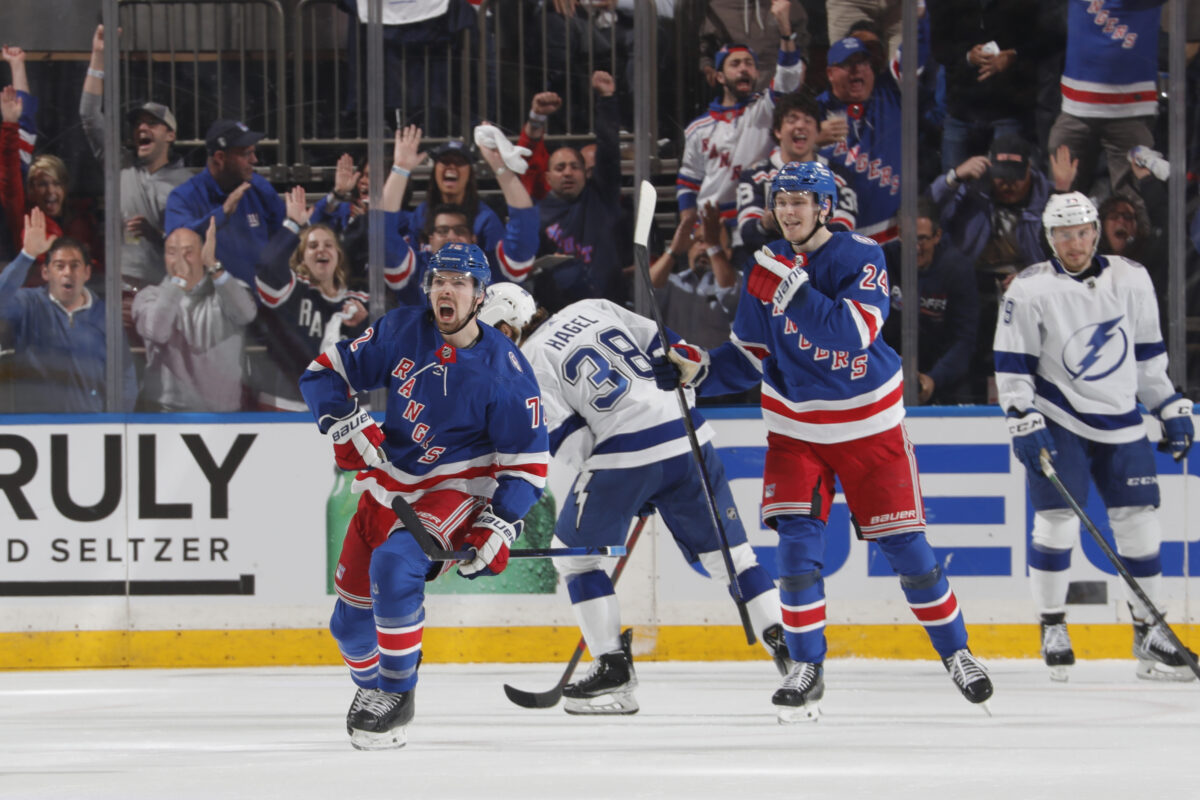
The players should have seen at least one of those issues coming – they had to know that their club was going to take on a “hunted” status after a 110-point effort and playoff run that brought them within two victories of the Stanley Cup Final. It’s possible that these Rangers are still adjusting to that, with opponents perhaps playing harder games against them than they did on a nightly basis last season.
Their other big problem probably shouldn’t come as a surprise either, however, given that it existed for most of last season. The plain fact is that the Rangers are struggling to fill out their lineup, both up front and at the back end, and doing anything about it is going to be infinitely more difficult than it was last spring.
Rangers Already Contending With Lack of Strong Options For Top 6
To be blunt, and with due respect to Jimmy Vesey and Barclay Goodrow, does a team with those players as its current top two right wings seem like a legitimate Stanley Cup contender? Vesey has continued his career resurrection by playing well in his Rangers reunion this season, and Goodrow’s intangible contributions aren’t debatable. That doesn’t change the fact that both players are bottom-six types, unsuited to playing long-term with Chris Kreider and Mika Zibanejad (Vesey), and Artemi Panarin and Vincent Trocheck (Goodrow).
This conundrum, of course, isn’t Gallant’s alone. The Rangers have keenly felt the loss of Andrew Copp and Frank Vatrano, two of the forwards picked up during last trade deadline’s shopping spree, who filled out their top six last season but couldn’t be retained due to the Blueshirts’ salary-cap crunch for 2022-23 and beyond.
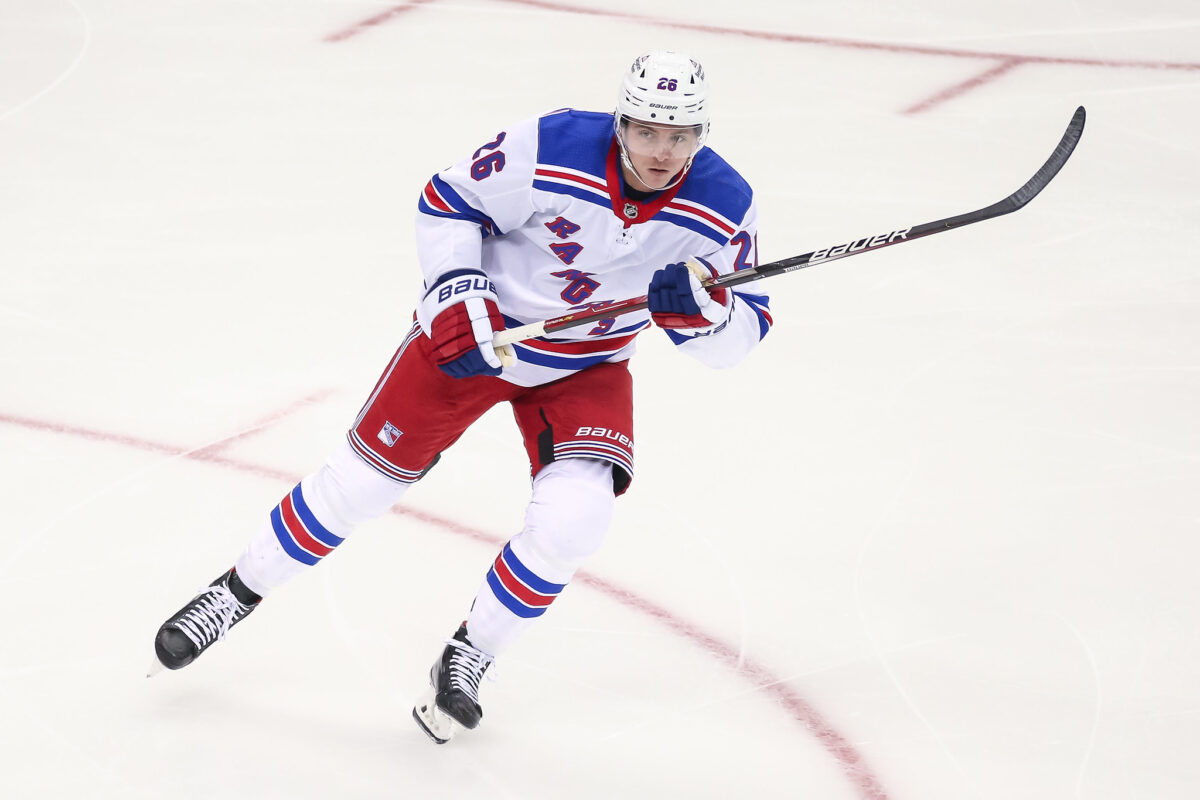
A quick look at the finances meant that the front office always knew the plan was going to have to be replacing the departed from within this season. That course of action, however, has yet to bear much fruit.
It was probably unrealistic to believe Vitali Kravtsov would step up in a big way in 2022-23. It seems, though, as if the team expected (hoped?) it would happen when Gallant gifted the right-wing spot on Panarin’s line to him to start the season, despite the fact that Kravtsov had anything but a remarkable training camp. Sure enough, Kravtsov has contributed almost nothing to this point – though that’s been more a function of an almost unbelievable spate of injuries in the early going that’s resulted in him playing less than 60 total minutes so far.
Related: Rangers’ Gauthier & Blais Could Prove Pivotal to Team’s Fortunes
Big forward Sammy Blais, back and supposedly healthy after a knee injury last November ended his season, has been a shell of himself, lacking burst and quickness. Gallant, again perhaps hoping against hope that Blais could become an offensive contributor to help mitigate the offseason lineup defections, announced at the outset of camp that Blais would start out on the right side of Kreider and Zibanejad – before quickly ending the experiment when it became obvious that Blais was far from right physically.
The razor-thin depth has reverberated through the roster. Kaapo Kakko and Alexis Lafreniere were moved up to fill the right-wing spots on the top two lines early in the season, an ostensibly inevitable promotion for the talented Kid Line mainstays. Yet neither really ran with the opportunity, and amidst growing evidence that Lafreniere is more comfortable at his natural left-wing spot, Gallant recently returned both players to the flanks of Filip Chytil, reforming the unit that was so consequential in last season’s playoffs.
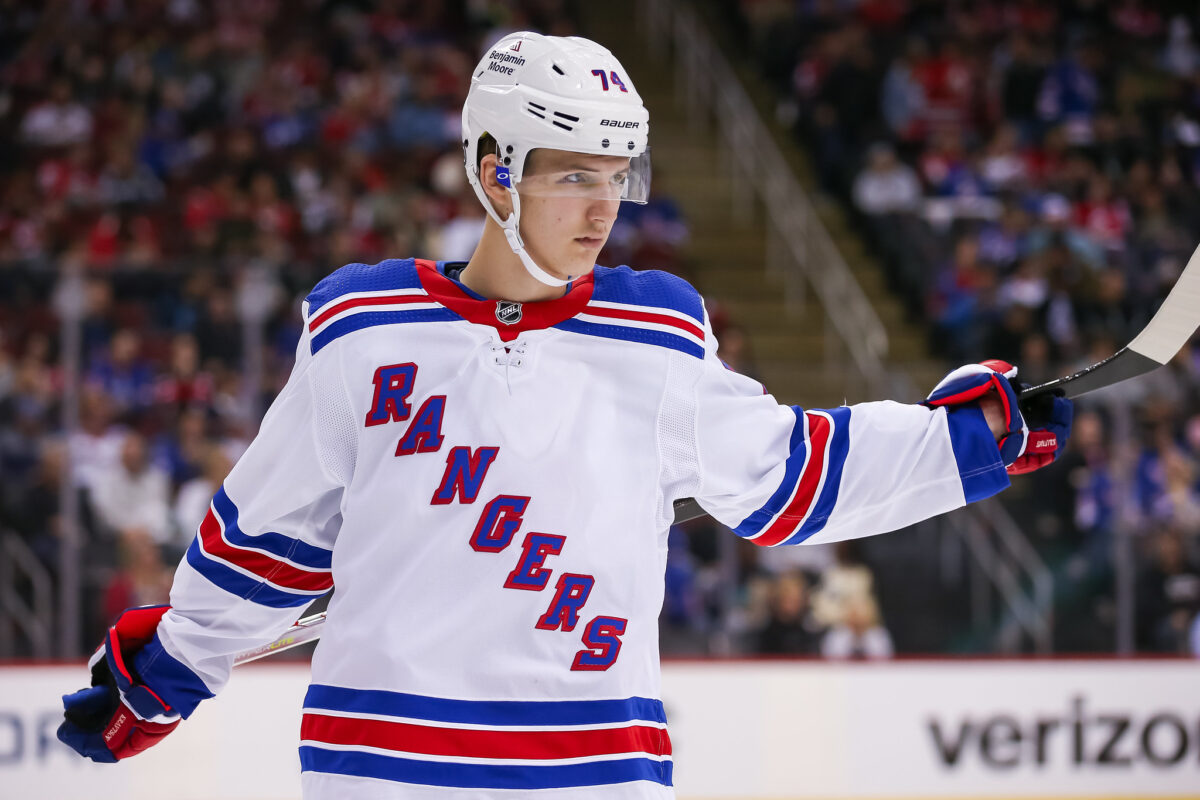
That, of course, did nothing to bolster the star-studded but top-heavy top six. Zibanejad has 10 goals and 10 assists in 18 games, but those stats are somewhat deceiving, the dynamic center having fattened up on the Rangers’ formidable power play. Only two of Zibanejad’s goals have come at even strength, while seven have been with the man advantage.
Hardly anyone expects Kreider to duplicate his career-high goal total of 52 from last season in 2022-23, and the big left wing has picked it up after a slow start with five goals and six assists in his last 10 games. Yet Gallant dropped him to the fourth line during the Blueshirts’ desultory 3-2 overtime home loss to the Detroit Red Wings on Nov. 6, a seemingly unfathomable scenario given Kreider’s spectacular performance last season.
Rangers Feeling the Departure of Vatrano, Copp, Strome
While the relative underperformance of Zibanejad and Kreider to start the season can’t necessarily be blamed on their right wings of the moment, it’s clear they miss Vatrano, whose straight-line speed and big shot opened up the ice for his linemates.
The same can be said for Copp, whose ability to quickly adapt his game to the unorthodox creativity of Panarin last spring forged an enhanced second line of himself, Panarin and now-departed center Ryan Strome. The latter loss has also been glaring, at least early on, with Panarin and Strome’s replacement Trocheck struggling to find the chemistry that defined the three-year Strome-Panarin partnership.
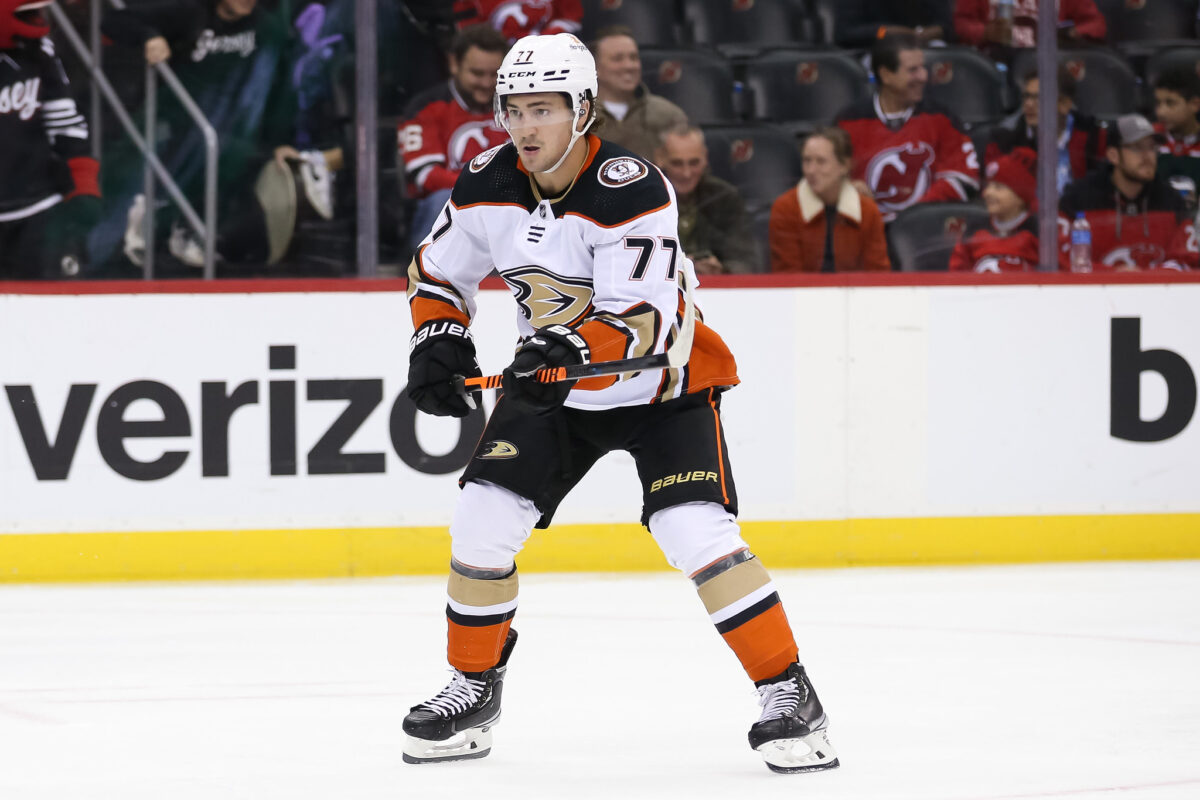
The Rangers remain confident that Trocheck and Panarin will click with time. In the meantime, the second line remains a work in progress. Panarin has looked dynamic and confident, piling up points as usual with 22 in 18 games. Yet he’s a minus-9, and though it’s early, the 31-year-old has never finished any of his previous seven seasons with a negative rating, posting a plus-118 mark in 508 contests coming into 2022-23.
Trocheck, clearly feeling his way in his first season on Broadway, has six goals and seven assists. However, he’s a minus-4 after posting a career-best plus-21 mark with the Carolina Hurricanes last season. The Trocheck-Panarin union does have good advanced metrics across the board through 17 games, highlighted by a 56.5 Corsi for percentage, suggesting the line is going in the right direction. Zibanejad and Kreider look even better at 60.0 Corsi for.
Do Gallant and the Rangers have any realistic options for improving those lines as they did last season, though? Unless Vesey and Goodrow prove to be revelations, perfect long-term matches for their high-end linemates, it looks as if Gallant’s internal choices are limited – and apparently, tried already. The coach likes what he’s seen out of power forward Julien Gauthier, but he’s playing on the fourth line and has never been given much of a shot to stick in the rarefied air of the top six.
The extent of the Rangers’ salary-cap issues, though, means they might need to consider doing just that with Gauthier. This is a club that will have to upgrade the roster next spring, assuming it’s in the playoff hunt. Yet their current 23-man configuration won’t allow them to do that, with just $173,801 available at the deadline.
More drastic measures appear increasingly likely. The most obvious would be sending enforcer Ryan Reaves to the minors, which would cut a pro-rated $1.125 million off the cap and free up $3.825 million of deadline space – space that could be used to add a desperately-needed scoring forward (obligatory Patrick Kane mention).
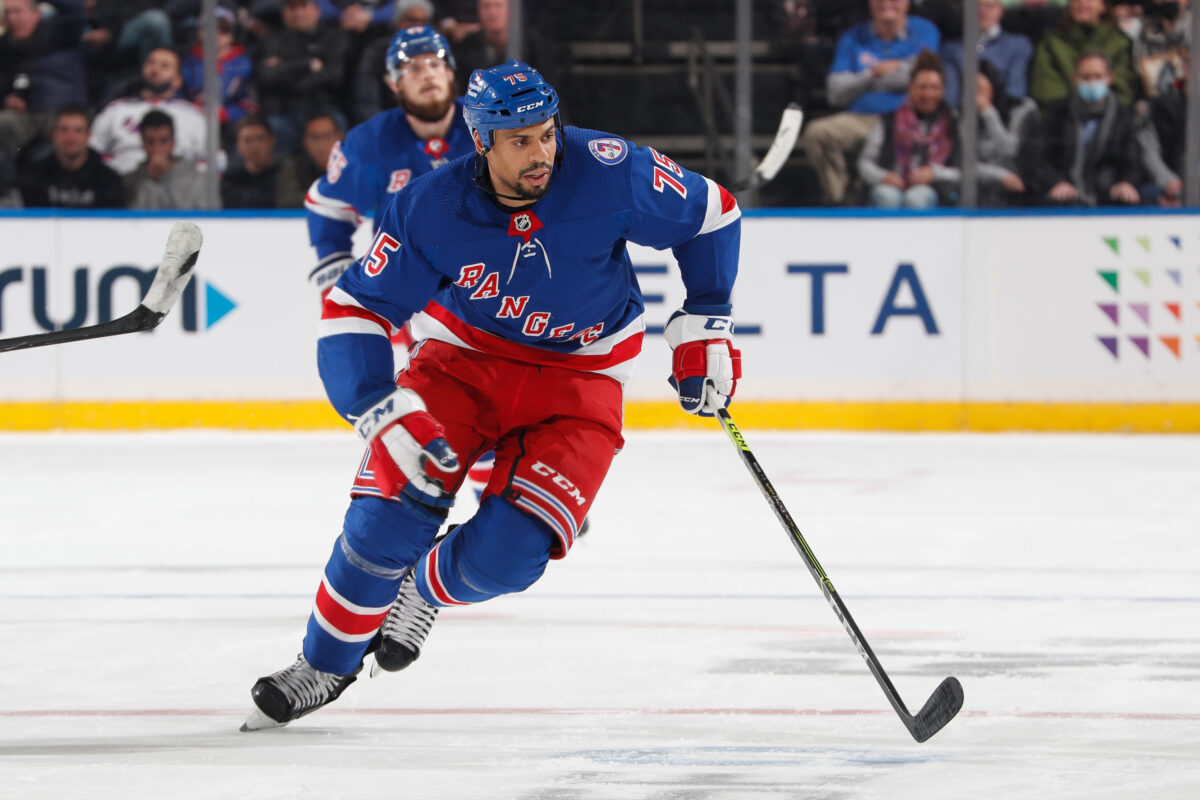
Yet notwithstanding the howls of a certain segment of the fan base, one that sees Reaves’ presence in the lineup as all that ails the Rangers, the club would be losing something by doing away with him. The big guy has brought swagger, edge, energy and leadership to the mix along with his fearsome physical presence and big hits. It’s apparent that the 35-year-old doesn’t need to play every game at this point, but the fact that his only use this season might be to accrue deadline cap space playing in the American Hockey League (if he even clears waivers) highlights the problems with the construction of this roster.
Defense Also Dealing With Dangerous Lack of Depth
The cap issues extend to the defense, which is compromised by a problematic third pair and a familiar lack of depth to deal with injuries. The Rangers have big plans for second-year right-sider Braden Schneider, but he’s in a difficult situation without a solid veteran option to join him on the third grouping.
That pairing was never a good one for the Rangers last season either, but in Patrik Nemeth and then deadline pickup Justin Braun, Gallant was at least able to deploy an experienced player to help Schneider, then a rookie. This season, Schneider’s partners have been youngsters Zac Jones and Libor Hajek, with neither looking like the long-term solution.
The Schneider-Jones tandem has posted a 49.1 Corsi for percentage, which isn’t bad, but Jones has yet to prove he’s a reliable defensive player, at 22 understandably prone to turnovers and bad decisions. The pairing is worse when it’s Hajek on Schneider’s left, the duo posting a ghastly 37.7 CF%. Help is needed on the blue line too, but again, the Rangers just don’t appear to have any easy way to acquire it.
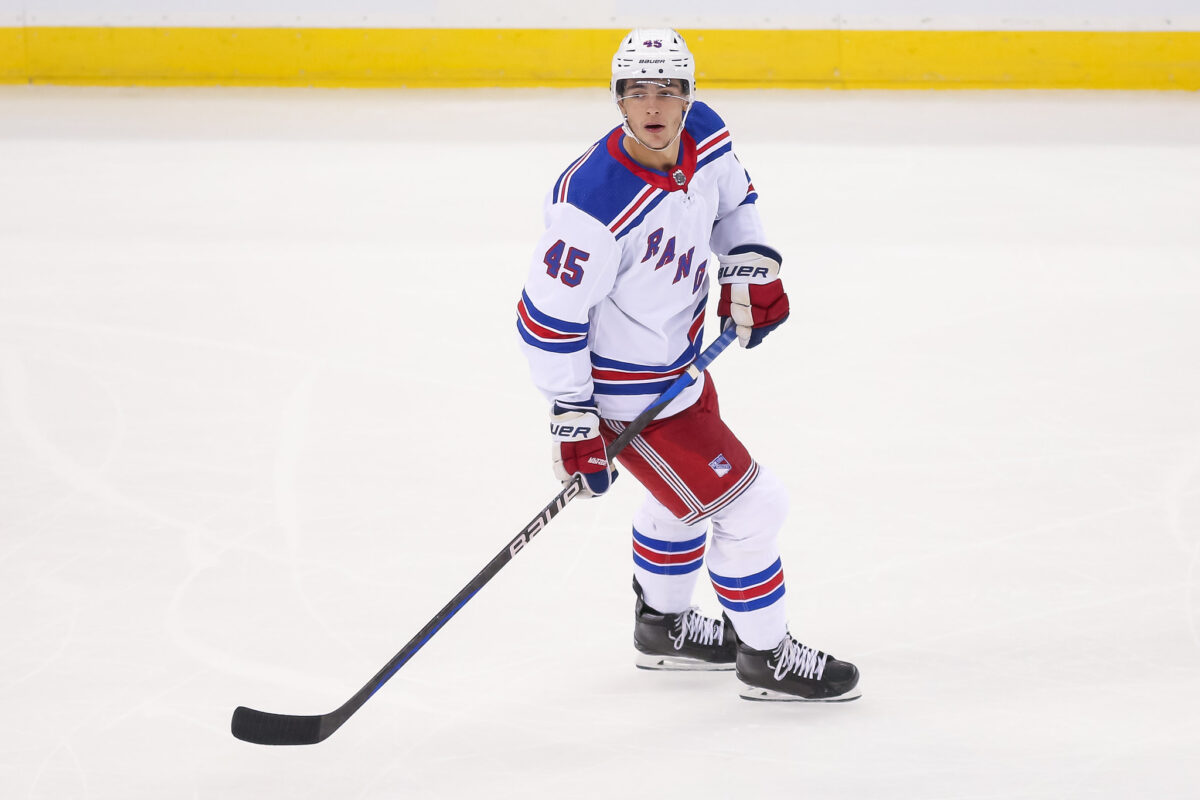
Perhaps there’s a lineup composition that Gallant, never shy about rearranging personnel, can in time unlock that will allow his team to unlock its full potential. Perhaps Blais, Gauthier or Jones will bust out, easing the pressure to upgrade. Perhaps the Kid Line will resume its growth from the last postseason, covering over the dearth of options to man the right wings on the top two units.
Gallant and the front office are probably crossing their collective fingers hard hoping for just that to happen. Unlike last season, when the Rangers had essentially unlimited cap space and knew they’d be free to make moves at the deadline, every dollar will count leading up to March 3. Adding Kane might still be possible, but that will all but rule out any other significant moves to fortify the lineup going into the postseason.
Will the Blueshirts be able to overcome their tight salary-cap situation and improve on last season’s results? The jury is likely to remain out into the spring. The Rangers, already wrestling with the problem less than two months into this season, certainly don’t want that verdict to come in any earlier.